Global Market Comments
June 13, 2023
Fiat Lux
Featured Trades:
(Trade Alert - (X) LEAPS – BUY)
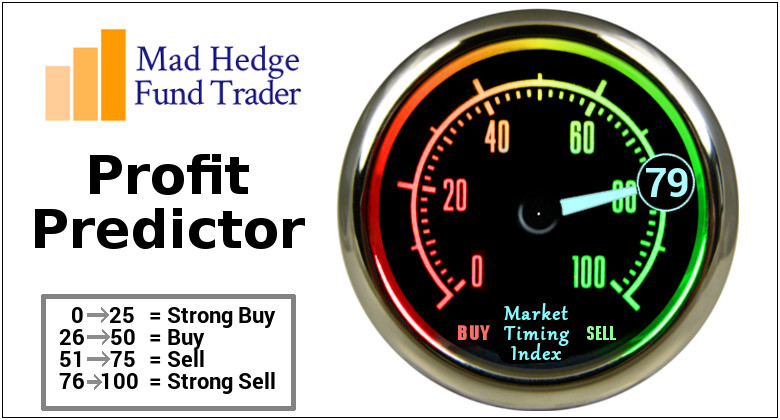
CLICK HERE to download today's position sheet.
Global Market Comments
June 13, 2023
Fiat Lux
Featured Trades:
(Trade Alert - (X) LEAPS – BUY)

CLICK HERE to download today's position sheet.
BUY the US Steel (X) December 2025 $20-$23 at-the-money vertical Bull Call spread LEAPS at $1.29 or best
Opening Trade
6-13-2023
expiration date: December 19, 2025
Number of Contracts = 1 contract
I normally don’t look at industries that are besieged by foreign competition, undercut by cheap imports, bedeviled by union problems, are major polluters, and whose principal product has declined in output by 32% since 1970, from 140 million tons a year to only 94.7 million tons.
However, I learned a lot covering the Japanese steel industry for Rupert Murdoch’s Australian newspaper for a decade during the 1970s.
In fact, I learned so much that President Jimmy Carter offered to appoint me as Deputy US Secretary of the Treasury for International Affairs so I could negotiate a steel pact with Japan. I turned the job down because as a G-15 I would only earn $15,000 a year.
Did I also mention that I was a dummy in the 1970s?
Walking in and out of steel mills all over the world for a decade there is one thing I learned for sure. There is no better call on the global economy.
US Steel (X) is the largest steel producer in the United States. In 2022, (X) knocked out 22.4 million tons of steel. Over the last 53 years, it has dealt with the onslaught of competition from Japan and China by becoming the most efficient blast furnace steel producer in the world.
As a result, (X) is highly leveraged to any increase in global steel demand. Its principal customers are the auto, construction, housing, shipbuilding, and oil industries.
(X) is in the half of the stock market that is currently discounting a deep recession. If we get one, the current share price is justified. If we don’t, the shares are overdue for a nice run-up. That makes (X) an ideal LEAPS candidate.
To learn more about US Steel, please visit their website at https://www.ussteel.com
I am therefore buying the US Steel (X) December 2025 $20-$23 at-the-money vertical Bull Call spread LEAPS at $1.29 or best.
Don’t pay more than $2.00 or you’ll be chasing on a risk/reward basis.
If you are looking for a cheap lottery ticket, then here is a lottery ticket.
While the chance of winning a real lottery is something like a million to one, this one is more like 10:1 in your favor. And the payoff is more than 2:1. That is the probability that US Steel (X) shares will rise over the next 32 months.
If you want to get more aggressive with more leverage, use a pair of strike prices higher up. This will give you a larger number of contracts at a lower price.
Please note that these options are illiquid, and it may take some work to get in or out. Start at my price and work your way up until you get done. Executing these trades is more an art than a science.
Let’s say the US Steel (X) December 2025 $20-$23 at-the-money vertical Bull Call spread LEAPS are showing a bid/offer spread of $1.25-$2.00. Enter an order for one contract at $1.30, another for $1.40, another for $1.50, and so on. Eventually, you will enter a price that gets filled immediately. That is the real price. Then enter an order for your full position at that real price.
Notice that the day-to-day volatility of LEAPS prices is miniscule since the time value is so great. This means that the day-to-day moves in your P&L will be small. It also means you can buy your position over the course of a month just entering new orders every day. I know this can be tedious, but getting screwed by overpaying for a position is even more tedious.
Look at the math below and you will see that if (X) shares are slightly higher than unchanged in 32 months it will generate a 132.6% profit with this position, such is the wonder of LEAPS.
Only use a limit order. DO NOT USE MARKET ORDERS UNDER ANY CIRCUMSTANCES. Just enter a limit order and work it until you find the real price.
This is a bet that US Steel will close above $23 by the December 19, 2025 options expiration in 32 months.
Here are the specific trades you need to execute this position:
Buy 1 December 2025 (X) $20 call at……..…….………$9.00
Sell short 1 December 2025 (X) $23 call at……….……$7.71
Net Cost:………………...........………….………..…….….....$1.29
Potential Profit: $3.00 - $1.29 = $1.71
(1 X 100 X $1.71) = $171 or 100% 32 months.
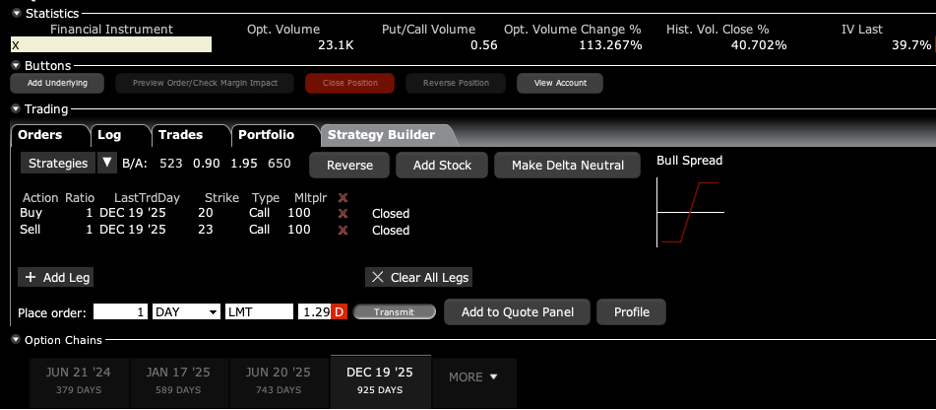
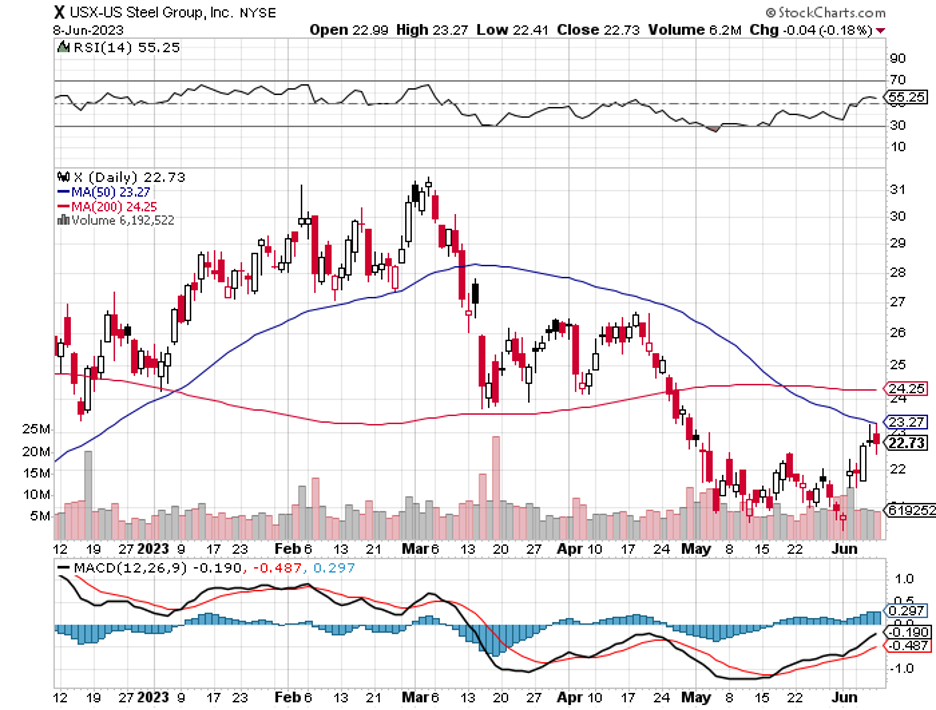
To see how to enter this trade in your online platform, please look at the order ticket below, which I pulled off of Interactive Brokers.
If you are uncertain on how to execute an options spread, please watch my training video on “How to Execute a Vertical Bull Call Debit Spread” by clicking here.
The best execution can be had by placing your bid for the entire spread in the middle market and waiting for the market to come to you. The difference between the bid and the offer on these deep in-the-money spread trades can be enormous.
Don’t execute the legs individually or you will end up losing much of your profit. Spread pricing can be very volatile on expiration months farther out.

Global Market Comments
June 12, 2023
Fiat Lux
Featured Trades:
(MARKET OUTLOOK FOR THE WEEK AHEAD, or THE BULL MARKET IS BACK!)
($VIX), (X), (FCX), (TSLA)

CLICK HERE to download today's position sheet.
It's becoming increasingly obvious to me that there is a single great trade shaping up.
S&P 500 (SPY) gains this year have been delivered by just seven stocks, which by now you all know well.
What happens next? The other 493 start to rise.
It just so happens that these troubled 493 stocks are close to their 2023 lows, with many of these the cheapest stocks in the market.
What kind of stocks are these?
Domestic industrial, commodity, and energy stocks have already discounted a deep recession. If the recession arrives, they are fairly priced. If we get only a modest recession, they should rise by 30%-50% reasonably quickly.
In fact, we have already seen recessions play out in broad swaths of the economy, including residential and commercial real estate, and you guessed it, industrials, commodities, and energy.
It gets better.
These sectors are usually the top performers when the stock market shifts from bear to bull. And guess what happened last week? The stock market rose 20% off its October low, officially moving from bear to bull market.
In fact, this bear lasted a depressing 248 days, making it the longest since 1948, or 75 years. This means that we now have the best entry point for domestic recovery stocks in 75 years.
You can see that individual stocks are starting to sense that the all-clear signal has sounded. Last week, they edged out small, tentative gains as if to see if the coast was clear. I also started sending out my first LEAPS for this cycle, those for Freeport McMoRan (FCX) and US Steel (X).
As a pioneer and very early investor in technology, you have not seen many recommendations from me to buy US Steel. I normally don’t look at industries that are besieged by foreign competition, undercut by cheap imports, bedeviled by union problems, are major polluters, and whose principal product has declined in output by 32% since 1970, from 140 million tons a year to only 94.7 million tons.
Yet, here it is.
It gets better still.
The collapse of the Volatility Index ($VIX) from $31 to $13 in three months has suddenly made trading front month call spreads tricky. However, it has made two-year LEAPS (Long Term Equity Anticipation Securities) the bargain of the century.
Two years LEAPS in sectors just coming off multiyear bottoms just as the Fed is about to reverse a harsh interest rate policy and igniting an economic revival sounds like the trade of the year, if not the decade, to me.
The sun, moon, and stars have aligned.
Now, here comes the turbocharger, the gasoline on the fire, the force multiplier.
I was playing around with our database last week in preparation for the launch of our Mad Hedge AI Service and drew some astonishing conclusions (see chart below).
Mad Hedge has been using AI now for 11 years, longer than almost anyone in the market. The longer the AI runs and the more data it accumulates, the smarter it gets. This is manifested in rapidly improving trading performance, which this year went ballistic. It is unbelievable to see this, but the numbers don’t lie.
Read it and weep.
So far in June, we are up +0.37%. My 2023 year-to-date performance is still at an eye-popping +62.12%. The S&P 500 (SPY) is up only a miniscule +12.63% so far in 2023. My trailing one-year return reached +101.03% versus +10.08% for the S&P 500.
That brings my 15-year total return to +659.31%. My average annualized return has blasted up to +48.83%, another new high, some 2.64 times the S&P 500 over the same period.
Some 42 of my 46 trades this year have been profitable. 23 of my last 24 consecutive trade alerts have been profitable.
I executed no trades last week. Concierge members received a LEAPS trade on US Steel (X), which regular subscribers should receive shortly. My longs in Tesla (TSLA) and Freeport McMoRan are now at max profit, which I will easily run into the June 16 option expiration this week. I now have a very rare 80% cash position due to the lack of high-return, low-risk short-term trades.
Tesla Model Y Became World’s Top Selling Car, in Q1, the first EV to do so. Some 267,200 Ys were shifted, edging out Toyota’s Corolla by 10,800 units, which led the field for decades. Elon Musk’s price-cutting volume play is working to the competition’s chagrin. The Model Y is on track to top one million sales this year. Buy (TSLA) on dips.
Tesla Drops Model 3 Price to $33,000, net of $7,500 federal EV tax credit. That helped it become the world’s top-selling car. Late to the market EV makers are getting killed, hemorrhaging cash. That took the shares up to a new 2023 high of $231. Keep buying (TSLA) on dips.
General Motors Adopts Tesla’s Charging System, essentially giving a near monopoly to Elon Musk. (GM) is joining Ford’s (F) capitulation from two weeks ago. This should grow into a $20 billion-a-year profit item for Tesla. All my outrageous forecasts are coming true. Buy (TSLA) on dips.
US to Send Another $2 Billion Worth of Advanced Missiles to Ukraine. The package includes advanced Raytheon (RTX) Himars and Lockheed (LMT) Patriot 3 missiles. Buy both (RTX) and (LMT) on dips as both missiles now have order backlogs extending for years.
Weekly Jobless Claims Jump to 261,000, an increase of 28,000, as the deflationary effects of high-interest rates take hold.
Europe Enters a Recession, with a -0.1% GDP print in Q1. Sharp rises in Euro interest rates get the blame.
Volatility Index Hits 3 ½ Year Low, at $14.26. Complacency with the S&P 500 is running rampant, which always ends in tears. The level implies a maximum up-and-down range of only 8.2% for 30 days.
Airline Profits to Double in 2023, as service sharply deteriorates with revenge travel accelerating. Looks for this summer to be a perfect travel storm. Low fuel costs are another plus.
My Ten-Year View
When we come out the other side of the recession, we will be perfectly poised to launch into my new American Golden Age, or the next Roaring Twenties. The economy decarbonizing and technology is hyper-accelerating, creating enormous investment opportunities. The Dow Average will rise by 800% to 240,000 or more in the coming decade. The new America will be far more efficient and profitable than the old.
Dow 240,000 here we come!
On Monday, June 12 at 8:00 AM EST, the Consumer Inflation Expectations are out.
On Tuesday, June 13 at 8:30 PM, Core Inflation Numbers are released. The Fed begins a two-day Open Market Committee Meeting.
On Wednesday, June 14 at 5:30 AM, the US Producer Price Index is published. At 11:00 AM, the Fed interest rate decision is announced. The press conference follows at 11:30 AM.
On Thursday, June 15 at 8:30 AM, the Weekly Jobless Claims are announced. US Retail Sales are also out.
On Friday, June 16 at 7:00 AM, the University of Michigan Consumer Sentiment Index is published. At 2:00 PM, the Baker Hughes Rig Count is printed.
As for me, the call from Washington DC was unmistakable, and I knew what was coming next.
“How would you like to serve your country?” I’ve heard it all before.
I answered, “Of course, I would.”
I was told that for first the first time ever, foreign pilots had access to Russian military aircraft, provided they had enough money. The Russian Air Force was so broke, they couldn’t afford the fuel to allow their pilots to maintain minimum flight hours. They needed foreign pilots to pay for the fuel.
You see, in 1992, everything in the just-collapsed Soviet Union was for sale. All they needed was someone to masquerade as a wealthy hedge fund manager looking for adventure.
No problem there.
And can you fly a MiG-29?
“Probably.”
A month later, I was wearing the uniform of a major in the Russian Air Force, my hair cut military short, sitting in the backseat of a black Volga limo, sweating bullets.
“Don’t speak,” said my driver.
The guard shifted his Kalashnikov and ordered us to stop, looked at my fake ID card, and waved us on. We were at Russia’s Zhukovky Airbase 100 miles north of Moscow, home of the country’s best interceptor fighter, the storied Fulcrum, or MiG-29.
I ended up spending a week at the top-secret base. That included daily turns in the centrifuge to make sure I was up to the G-forces demand by supersonic flight. Afternoons saw me in ejection training. There in my trainer, I had to shout “eject, eject, eject,” pull the right-hand lever under my seat, and then get blasted ten feet in the air, only to settle back down to earth.
As a known big spender, I was a pretty popular guy on the base, and I was invited to a party every night. Let me tell you that vodka is a really big deal in Russia, and I was not allowed to leave until I had finished my own bottle, straight. My memory of what happened after 8:00 PM every night is pretty foggy.
After being taught to fear Americans for their entire lives the Russians were fascinated to actually meet one in person.
In 1993, Russia was realigning itself with the West, and everyone was putting on their best face going forward. I had been warned about this ahead of time and judiciously downed a shot glass of cooking oil every evening to ward off the worst effects of alcohol poisoning. It worked.
Preflight involved getting laced into my green super-tight gravity suit, a three-hour project. Two women tied the necessary 300 knots, joking and laughing all the while. They wished me a good flight.
Next, I met my co-pilot, Captain A. Pavlov, Russia’s top test pilot. He quizzed me about my flight experience. I listed off the names: Laos, Cambodia, Thailand, Israel, Croatia, Serbia, Bosnia, Kuwait, Iraq, and Saudi Arabia. It was clear he still needed convincing.
Then I was strapped into the cockpit.
Oops!
All the instruments were in the Cyrillic alphabet….and were metric! They hadn’t told me about this, but I would deal with it.
We took off and went straight up, gaining 50,000 feet in two minutes. Yes, fellow pilots, that is a climb rate of an astounding 25,000 feet a minute. They call them interceptors for a reason. It was a humid day, and when we hit 50,000 feet the air suddenly turned to snowflakes swirling around the cockpit.
Then we went through a series of violent spins, loops, and other evasive maneuvers (see my logbook entry below). Some of them seemed aeronautically impossible. I watched the Mach Meter carefully; it was frequently dancing up to the “10” level. Anything over ten is invariably fatal, as it ruptures your internal organs. For a few seconds, I thought Pavlov was trying to kill me.
Then Pavlov said, “I guess you are a real pilot, and he handed the stick over to me. I put the fighter into a steep dive, gaining the maximum handbook speed of March 2.5, or 2.5 times the speed of sound, or 1,918 miles per hour in seconds. Let me tell you, there is nothing like diving a fighter from 90,000 feet to the earth at 1,918 miles per hour.
Then we found a wide river and buzzed that at 500 feet just under the speed of sound. Fly over any structure over the speed of sound and the resulting shock wave shatters concrete.
I noticed the fuel gages were running near empty and realized that the Russians had only given me enough fuel to fly an hour. That’s so I wouldn’t hijack the plane and fly it to Finland. Still, Pavlov trusted me enough to let me land the plane; no small thing in a $30 million aircraft. I made a perfect three-point landing and taxied back to base.
I couldn’t help but notice that there was a MiG-25 Foxbat parked in the adjoining hanger and asked if it was available. They said “yes”, but only if I had $10,000 in cash on hand, thinking this was an impossibility. I said, “No problem” and whipped out my American Express gold card.
Their eyes practically popped out of their heads, as this amounted to a lifetime of earnings for the average Russian. They took a picture of the card, called in the number, and in five minutes I was good to go.
Thank you American Express!
They asked when I wanted to fly, and as I was still in my gravity suite I said, “How about right now?” The fuel truck duly backed up and in 20 minutes I was ready for takeoff. Pavlov, once again, my co-pilot. This time, he let me do the takeoff AND the landing.
The first thing I noticed was the missile trigger at the end of the stick. Then I asked the question that had been puzzling aeronautics analysts for years. “If the ceiling of the MiG-25 was 90,000 feet and the U-2 was at 100,000 feet how did the Russians make up the last 10,000 feet?
“It’s simple,” said Pavlov. Put on full power, stall out at 90,000 feet, then fire your rockets at the apex of the parabola to make up the distance. There was only one problem with this. If your stall forced you to eject, the survival rate was only 50%. That is because when the plane in free fall hits the atmosphere at 50,000 feet it’s like hitting a wall of concrete. I told him to go ahead, and he repeated the maneuver for my benefit.
It was worth the risk to get up to 90,000 feet. There you can clearly see the curvature of the earth, the sky above is black, you can see stars in the middle of the day, and your forward vision is about 400 miles. We were the highest men in the world at that moment. Again, I made another perfect three-point landing, thanks to flying all those Mustangs and Spitfires over the decades.
After my big flights, I was taken to a museum on the base and shown the wreckage of the U-2 spy plane flown by Francis Gary Powers shot down over Russia in 1960. After suffering a direct hit from a missile there wasn’t much left of the U-2. However, I did notice a nameplate that said, “Lockheed Aircraft Company, Los Angeles, California.”
I asked “Is it alright if I take this home? My mother worked at this factory during WWII building bombers.” My hosts looked horrified. “No, no, no, no. This is one of Russia’s greatest national treasures,” and they hustled me out of the building as fast as they could.
It's a good thing that I struck while the iron was hot as foreigners are no longer allowed to fly any Russian jets. Perhaps that’s why I have suddenly become very popular in Washington DC once again.

My MiG 25 in Russia

Russian Test Pilot A. Pavlov
Good Luck and Good Trading,
John Thomas
CEO & Publisher
The Diary of a Mad Hedge Fund Trader
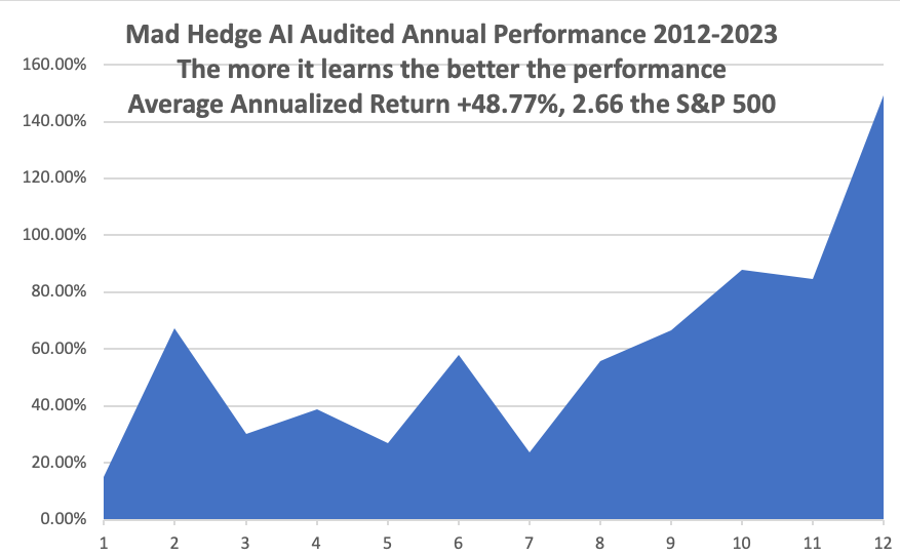
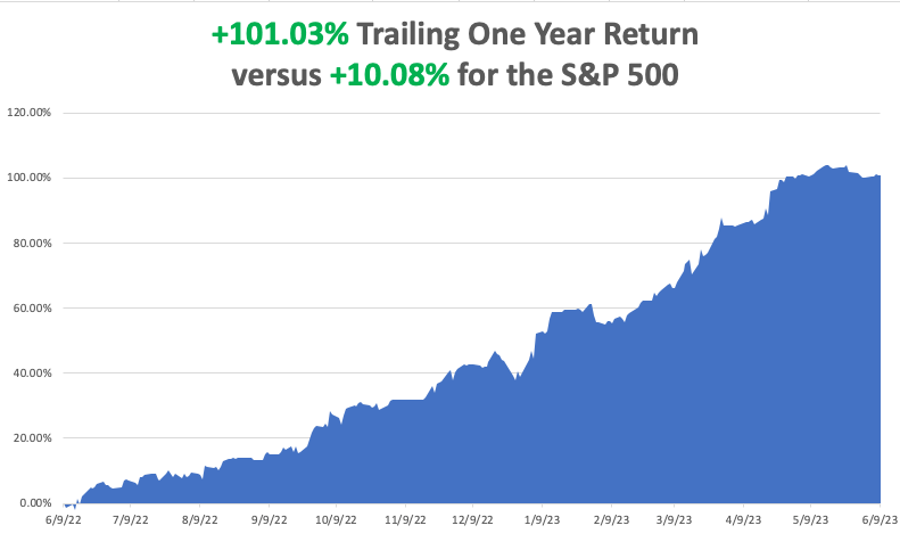
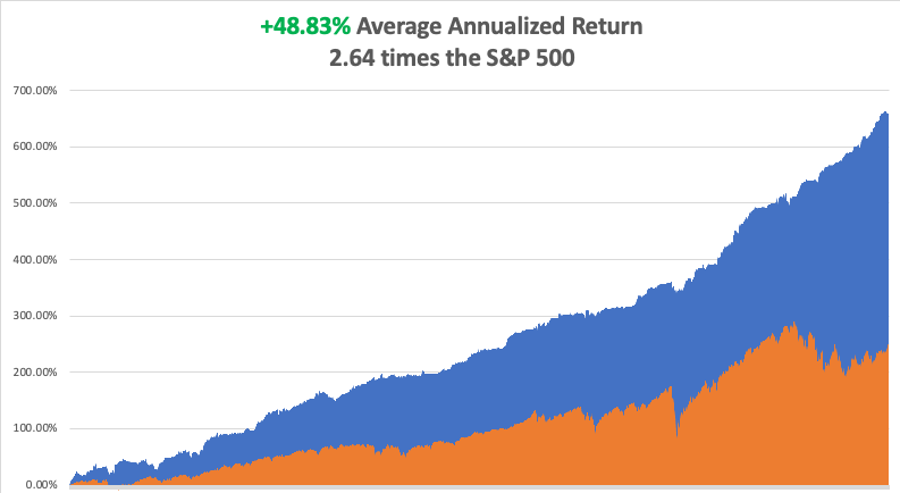
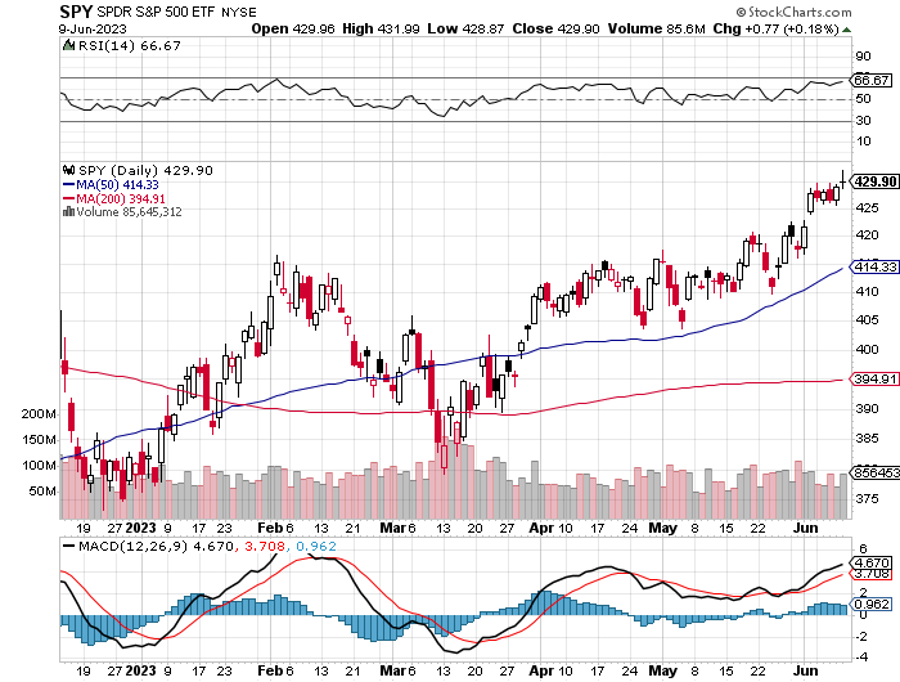
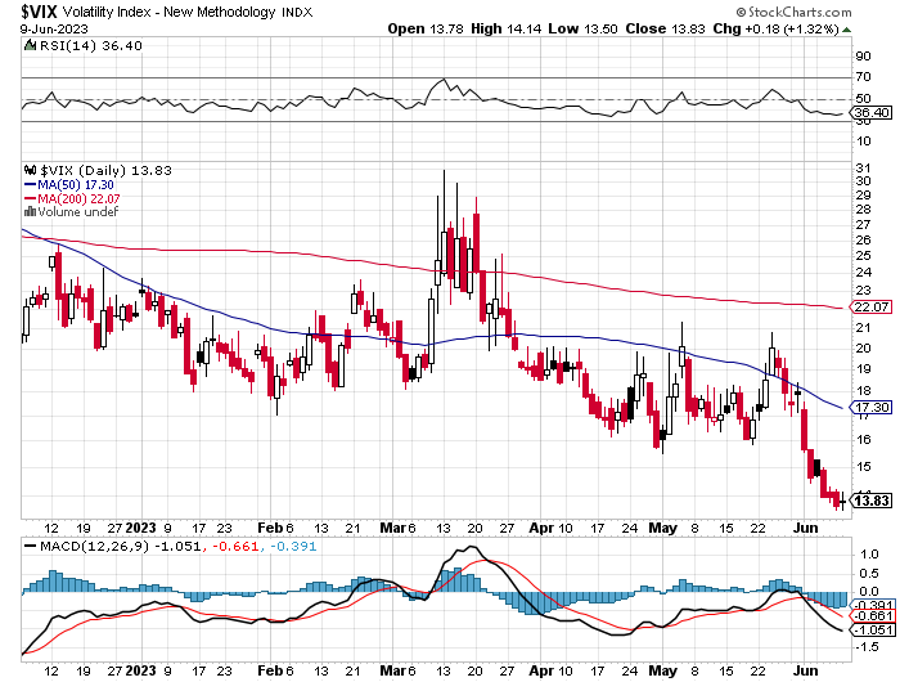
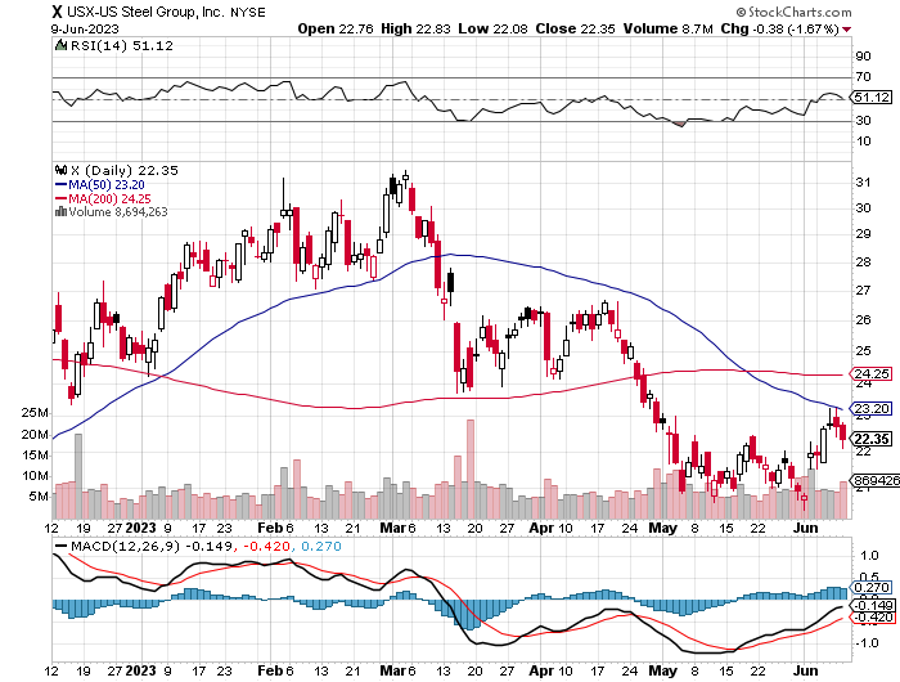
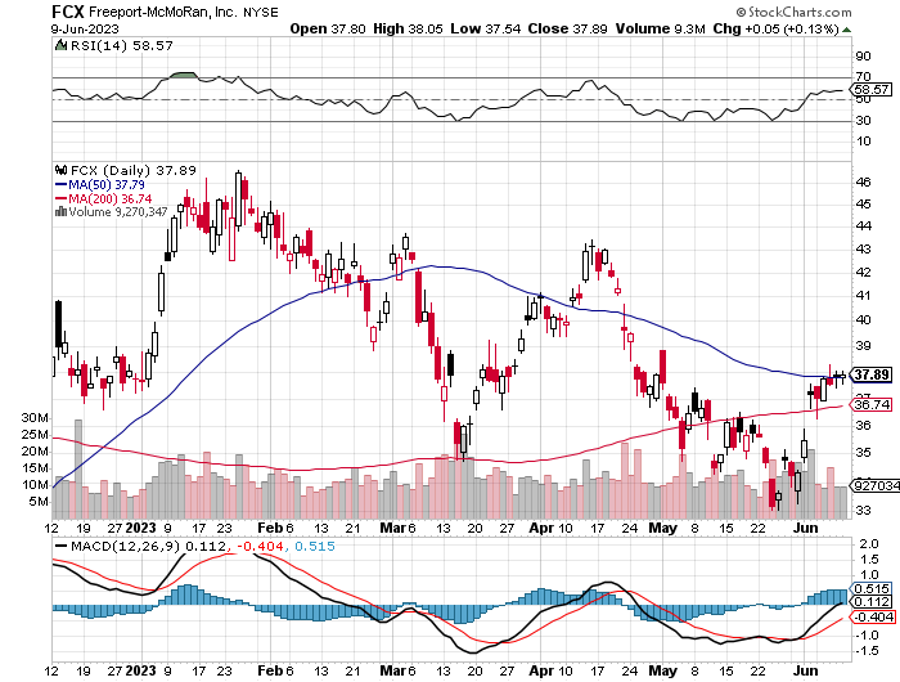
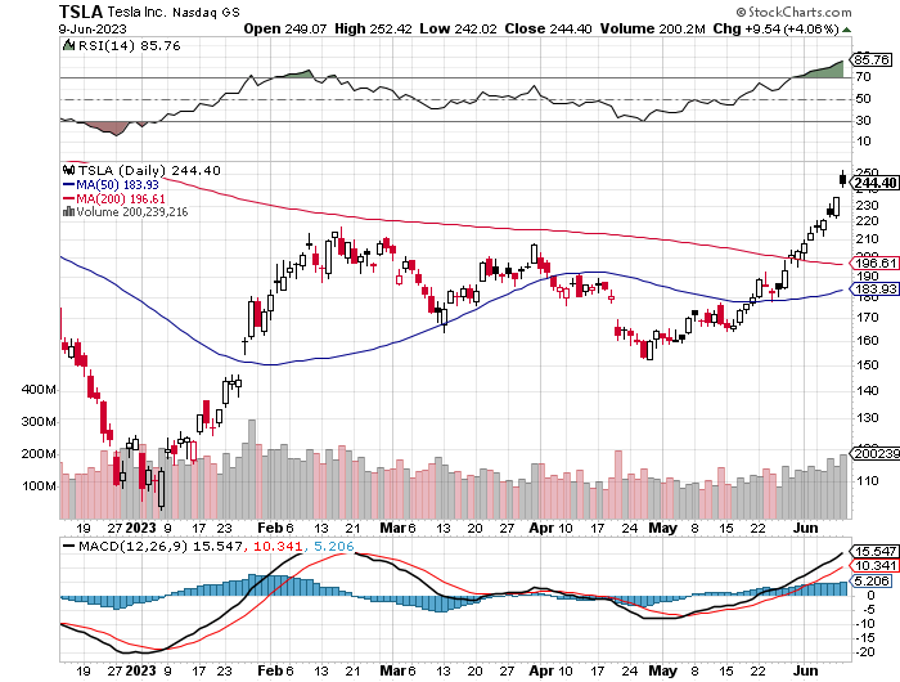
Global Market Comments
June 5, 2023
Fiat Lux
Featured Trades:
(MARKET OUTLOOK FOR THE WEEK AHEAD, or HERE IS THE NEXT BIG PLAY),
(FCX), (X), (CAT), (DE), (CLV), (UNG), (OXY), (RIO), (BHP), (TSLA)
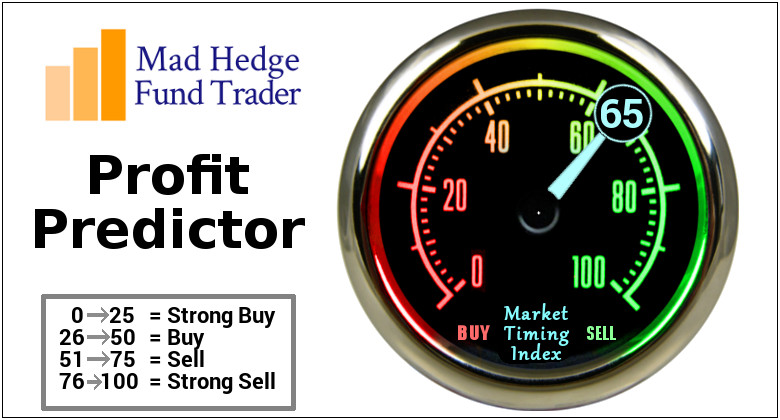
CLICK HERE to download today's position sheet.
Global Market Comments
January 4, 2023
Fiat Lux
2023 Annual Asset Class Review
A Global Vision
FOR PAID SUBSCRIBERS ONLY
Featured Trades:
(SPX), (QQQ), (IWM) (AAPL), (XLF), (BAC) (JPM), (BAC), (C), (MS), (GS),
(X), (CAT), (DE),(TLT), (TBT), (JNK), (PHB), (HYG), (MUB), (LQD), (FXE), (EUO),
(FXC), (FXA), (YCS), (FXY), (CYB), (DIG), (RIG), (USO), (DUG), (UNG), (USO),
(XLE), (AMLP),(GLD), (DGP), (SLV), (PPTL), (PALL), (ITB), (LEN), (KBH), (PHM)
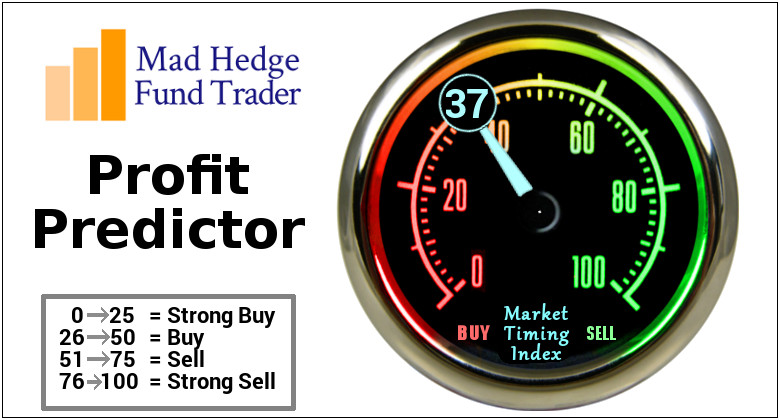
I am once again writing this report from a first-class sleeping cabin on Amtrak’s legendary California Zephyr.
By day, I have two comfortable seats facing each other next to a panoramic window. At night, they fold into two bunk beds, a single and a double. There is a shower, but only Houdini could navigate it.
I am anything but Houdini, so I foray downstairs to use the larger public hot showers. They are divine.

We are now pulling away from Chicago’s Union Station, leaving its hurried commuters, buskers, panhandlers, and majestic great halls behind. I love this building as a monument to American exceptionalism.
I am headed for Emeryville, California, just across the bay from San Francisco, some 2,121.6 miles away. That gives me only 56 hours to complete this report.
I tip my porter, Raymond, $100 in advance to make sure everything goes well during the long adventure and to keep me up to date with the onboard gossip.
The rolling and pitching of the car is causing my fingers to dance all over the keyboard. Microsoft’s Spellchecker can catch most of the mistakes, but not all of them.

As both broadband and cell phone coverage are unavailable along most of the route, I have to rely on frenzied Internet searches during stops at major stations along the way to Google obscure data points and download the latest charts.
You know those cool maps in the Verizon stores that show the vast coverage of their cell phone networks? They are complete BS.
Who knew that 95% of America is off the grid? That explains so much about our country today.
I have posted many of my better photos from the trip below, although there is only so much you can do from a moving train and an iPhone 14 Pro Max.
Here is the bottom line which I have been warning you about for months. In 2023, we will probably top the 84.63% we made last year, but you are going to have to navigate the reefs, shoals, and hurricanes. Do it and you can laugh all the way to the bank. I will be there to assist you to navigate every step.
The first half of 2023 will be all about trading. After that, I expect markets to go straight up.
And here is my fundamental thesis for 2023. After the Fed kept rates too low for too long, then raised them too much, it will then panic and lower them again too fast to avoid a recession. In other words, a mistake-prone Jay Powell will keep making mistakes. That sounds like a good bet to me.
Let me give you a list of the challenges I see financial markets are facing in the coming year:

The Ten Key Variables for 2023
1) When will the Fed pivot?
2) How much of a toll will the quantitative tightening take?
3) How soon will the Russians give up on Ukraine?
4) When will buyers return to technology stocks from value plays?
5) Will gold replace crypto as the new flight to safety investment?
6) When will the structural commodities boom get a second wind?
7) How fast will the US dollar fall?
8) How quickly will real estate recover?
9) How fast can the Chinese economy bounce back from Covid-19?
10) How far will oil prices keep falling?


The Thumbnail Portfolio
Equities – buy dips
Bonds – sell buy dips
Foreign Currencies – buy dips
Commodities – buy dips
Precious Metals – buy dips
Energy – stand aside
Real Estate – buy dips

1) The Economy – Bouncing Along the Bottom
Whether we get a recession or not, you can count on markets fully discounting one, which it is currently doing with reckless abandon.
Anywhere you look, the data is dire, save for employment, which may be the last shoe to fall. Technology companies seem to be leading us in the right direction with never-ending mass layoffs. Even after relentless cost-cutting though, there are still 1.5 tech job offers per applicant, which is down from last year’s three.
The Fed is currently predicting a weak 0.5% GDP growth rate for 2023, the same feeble rate we saw for 2022. What we might get is two-quarters of negative growth in the first half followed by a sharp snapback in the second half.
Whatever we get, it will be one of the mildest recessions or growth recessions in American economic history. There is no hint of a 2008-style crash. The banking system was shored up too well back then to prevent that. Thank Dodd/Frank.
So far, so good.
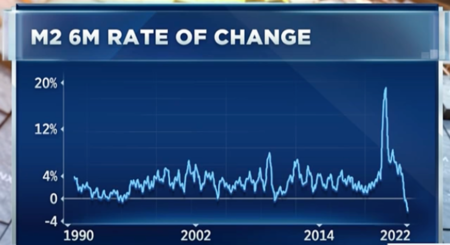

2) Equities (SPX), (QQQ), (IWM) (AAPL), (XLF), (BAC) (JPM), (BAC), (C), (MS), (GS), (X), (CAT), (DE)
Since my job is to make your life incredibly easy, I am going to narrow my equity strategy for 2023.
It's all about falling interest rates.
When interest rates are high, as they are now, you only look at trades and investments that can benefit from falling interest rates.
In the first half, that will be value plays like banks, (JPM), (BAC), (C), financials (MS), (GS), homebuilders (KBH), (LEN), (PHM), industrials (X), capital goods (CAT), (DE).
As we come out of any recession in the second half, growth plays will rush to the fore. Big tech will regain leadership and take the group to new all-time highs. That means the volatility and chop we will certainly see in the first half will present a generational opportunity to get into the fastest-growing sectors of the US economy at bargain prices. I’m talking Cadillacs at KIA prices.
A category of its own, Biotech & Healthcare should do well on their own. Not only are they classic defensive plays to hold during a recession, technology and breakthrough new discoveries are hyper-accelerating. My top three picks there are Eli Lily (ELI), Abbvie (ABBV), and Merck (MRK).
Block out time on your calendars because whenever the Volatility Index (VIX) tops $30, I am going pedal to the metal, and full firewall forward (a pilot term), and your inboxes will be flooded with new trade alerts.
There is another equity subclass that we haven’t visited in about a decade, and that would be emerging markets (EEM). After ten years of punishment by a strong dollar, (EEM) has also been forgotten as an investment allocation. We are now in a position where the (EEM) is likely to outperform US markets in 2023, and perhaps for the rest of the decade.

3) Bonds (TLT), (TBT), (JNK), (PHB), (HYG), (MUB), (LQD)
Amtrak needs to fill every seat in the dining car to get everyone fed on time, so you never know who you will share a table with for breakfast, lunch, and dinner.
There was the Vietnam Vet Phantom Jet Pilot who now refused to fly because he was treated so badly at airports. A young couple desperately eloping from Omaha could only afford seats as far as Salt Lake City. After they sat up all night, I paid for their breakfast.
A retired British couple was circumnavigating the entire US in a month on a “See America Pass.” Mennonites are returning home by train because their religion forbade automobiles or airplanes.
The national debt ballooned to an eye-popping $30 trillion in 2021, a gain of an incredible $3 trillion and a post-World War II record. Yet, as long as global central banks are still flooding the money supply with trillions of dollars in liquidity, bonds will not fall in value too dramatically. I’m expecting a slow grind down in prices and up in yields.
The great bond short of 2021 never happened. Even though bonds delivered their worst returns in 19 years, they still remained nearly unchanged. That wasn’t good enough for the many hedge funds, which had to cover massive money-losing shorts into yearend.
Instead, the Great Bond Crash will become a new business. This time, bonds face the gale force headwinds of three promised interest rate hikes. The year-end government bond auctions were a complete disaster.
Fed borrowing continues to balloon out of control. It’s just a matter of time before the last billion dollars in government borrowing breaks the camel’s back.
That makes a bond short a core position in any balanced portfolio. Don’t get lazy. Make sure you only sell a rally lest we get trapped in a range, as we did for most of 2021.

A Visit to the 19th Century
4) Foreign Currencies (FXE), (EUO), (FXC), (FXA), (YCS), (FXY), (CYB)
With a major yield advantage over the rest of the world, the US dollar has been on an absolute tear for the past decade. After all, we have the world’s strongest economy.
That is about to end.
If your primary assumption is that US interest rates will see a sharp decline sometime in 2023, then the outlook for the greenback is terrible.
Currencies are driven by interest rate differentials and the buck is soon going to see the fastest shrinking yield premium in the forex markets.
That shines a great bright light on the foreign currency ETFs. You could do well buying the Australian Dollar (FXA), Euro (FXE), Japanese yen (FXE), and British Pound (FXB). I’d pass on the Chinese yuan (CYB) right now until their Covid shutdowns end.

5) Commodities (FCX), (VALE), (DBA)
Commodities are the high beta play in the financial markets. That’s because the cost of being wrong is so much higher. Get on the losing side of commodities and you will be bled dry by storage costs, interest expenses, contangos, and zero demand.
Commodities have one great attribute. They predict recessions earlier than any other asset class. When they peaked in March of 2022, they were screaming loud and clear that a recession would hit in early 2023. By reversing on a dime on October 14, they also told us that the recovery would begin in July of 2023.
You saw this in every important play in the sector, including Broken Hill (BHP), Peabody Energy (BTU), Freeport McMoRan (TCX), and Alcoa Aluminum (AA). Excuse me for using all the old names.
The heady days of the 2011 commodity bubble top are about to replay. Now that this sector is convinced of a substantially weaker US dollar and lower inflation, it is once more a favorite target of traders.
China will still demand prodigious amounts of imported commodities once its pandemic shutdown ends, but not as much as in the past. Much of the country has seen its infrastructure built out, and it is turning from a heavy industrial to a service-based economy, much like the US. Investors are keeping a sharp eye on India as the next major commodity consumer.
And here’s another big new driver. Each electric vehicle requires 200 pounds of copper and production is expected to rise from 1 million units a year to 25 million by 2030. Annual copper production will have to increase three-fold in a decade to accommodate this increase, no easy task, or prices will have to rise.
The great thing about commodities is that it takes a decade to bring new supply online, unlike stocks and bonds, which can merely be created by an entry in an excel spreadsheet. As a result, they always run far higher than you can imagine.
Accumulate all commodities on dips.

6) Energy (DIG), (RIG), (USO), (DUG), (UNG), (XLE), (AMLP)
Energy was the top-performing sector of 2022. But remember, you will be trading an asset class that is eventually on its way to zero sooner than you think. However, you could have several doublings on the way to zero. This is one of those times.
The real tell here is that energy companies are bailing on their own industry. Instead of reinvesting profits back into their future exploration and development, as they have for the last century, they are paying out more in dividends and share buybacks.
Take the money and run.
There is the additional challenge in that the bulk of US investors, especially environmentally friendly ESG funds, are now banned from investing in legacy carbon-based stocks. That means permanently cheap valuations and share prices for the energy industry.
Energy now counts for only 5% of the S&P 500. Twenty years ago, it boasted a 15% weighting.
The gradual shutdown of the industry makes the supply/demand situation infinitely more volatile.
Unless you are a seasoned, peripatetic, sleep-deprived trader, there are better fish to fry.
And guess who the world’s best oil trader was in 2022? That would be the US government, which drew 400 million barrels from the Strategic Petroleum Reserve in Texas and Louisiana at an average price of $90 and now has the option to buy it back at $70, booking a $4 billion paper profit.
The possibility of a huge government bid at $70 will support oil prices for at least early 2023. Whether the Feds execute or not is another question. I’m advising them to hold off until we hit zero again to earn another $18 billion. Why we even have an SPR is beyond me, since America has been a large net energy producer for many years now. Do you think it has something to do with politics?
To understand better how oil might behave in 2023, I’ll be studying US hay consumption from 1900-1920. That was when the horse population fell from 100 million to 6 million, all replaced by gasoline-powered cars and trucks. The internal combustion engine is about to suffer the same fate.

7) Precious Metals (GLD), (DGP), (SLV), (PPTL), (PALL)
The train has added extra engines at Denver, so now we may begin the long laboring climb up the Eastern slope of the Rocky Mountains.
On a steep curve, we pass along an antiquated freight train of hopper cars filled with large boulders.
The porter tells me this train is welded to the tracks to create a windbreak. Once, a gust howled out of the pass so swiftly that it blew a passenger train over on its side.
In the snow-filled canyons, we saw a family of three moose, a huge herd of elk, and another group of wild mustangs. The engineer informs us that a rare bald eagle is flying along the left side of the train. It’s a good omen for the coming year.
We also see countless abandoned 19th century gold mines and the broken-down wooden trestles leading to huge piles of tailings, relics of previous precious metals booms. So, it is timely here to speak about the future of precious metals.
Fortunately, when a trade isn’t working, I avoid it. That certainly was the case with gold last year.
2022 was a terrible year for precious metals until we got the all-asset class reversal in October. With inflation soaring, stocks volatile, and interest rates soaring, gold had every reason to fall. Instead, it ended up unchanged on the year, thanks to a 15% rally in the last two months.
Bitcoin stole gold’s thunder until a year ago, sucking in all of the speculative interest in the financial system. Jewelry and industrial demand were just not enough to keep gold afloat. That is over now for good and that is why gold is regaining its luster.
Chart formations are starting to look very encouraging with a massive head-and-shoulders bottom in place. So, buy gold on dips if you have a stick of courage on you, which I hope you do.
Higher beta silver (SLV) will be the better bet as it already has been because it plays a major role in the decarbonization of America. There isn’t a solar panel or electric vehicle out there without some silver in them and the growth numbers are positively exponential. Keep buying (SLV), (SLH), and (WPM) on dips.

8) Real Estate (ITB), (LEN), (KBH), (PHM)
The majestic snow-covered Rocky Mountains are behind me. There is now a paucity of scenery, with the endless ocean of sagebrush and salt flats of Northern Nevada outside my window, so there is nothing else to do but write.
My apologies in advance to readers in Wells, Elko, Battle Mountain, and Winnemucca, Nevada.
It is a route long traversed by roving banks of Indians, itinerant fur traders, the Pony Express, my own immigrant forebearers in wagon trains, the Transcontinental Railroad, the Lincoln Highway, and finally US Interstate 80, which was built for the 1960 Winter Olympics at Squaw Valley.
Passing by shantytowns and the forlorn communities of the high desert, I am prompted to comment on the state of the US real estate market.
Those in the grip of a real estate recession take solace. We are in the process of unwinding 2022’s excesses, but no more. There is no doubt a long-term bull market in real estate will continue for another decade, once a two year break is completed.
There is a generational structural shortage of supply with housing which won’t come back into balance until the 2030s. You don’t have a real estate crash when we are short 10 million homes.
The reasons, of course, are demographic. There are only three numbers you need to know in the housing market for the next ten years: there are 80 million baby boomers, 65 million Generation Xers who follow them, and 86 million in the generation after that, the Millennials.
The boomers (between ages 58 and 76) have been unloading dwellings to the Gen Xers (between ages 46 and 57) since prices peaked in 2007. But there are not enough of the latter, and three decades of falling real incomes mean that they only earn a fraction of what their parents made. That’s what caused the financial crisis. That has created a massive shortage of housing, both for ownership and rentals.
There is a happy ending to this story.
Millennials now aged 26-41 are now the dominant buyers in the market. They are transitioning from 30% to 70% of all new buyers of homes. They are also just entering the peak spending years of middle age, which is great for everyone.
The Great Millennial Migration to the suburbs and Middle America has just begun. Thanks to the pandemic and Zoom, many are never returning to the cities. That has prompted massive numbers to move from the coasts to the American heartland.
That’s why Boise, Idaho was the top-performing real estate market, followed by Phoenix, Arizona. Personally, I like Reno, Nevada, where Apple, Google, Amazon, and Tesla are building factories as fast as they can.
As a result, the price of single-family homes should continue to rise during the 2020s, as they did during the 1970s and the 1990s when similar demographic forces were at play.
This will happen in the context of a labor shortfall, soaring wages, and rising standards of living.
Rising rents are accelerating this trend. Renters now pay 35% of their gross income, compared to only 18% for owners, and less, when multiple deductions and tax subsidies are considered. Rents are now rising faster than home prices.
Remember, too, that the US will not have built any new houses in large numbers in 16 years. The 50% of small home builders that went under during the Financial Crisis never came back.
We are still operating at only a half of the 2007 peak rate. Thanks to the Great Recession, the construction of five million new homes has gone missing in action.
There is a new factor at work. We are all now prisoners of the 2.75% 30-year fixed rate mortgages we all obtained over the past five years. If we sell and try to move, a new mortgage will cost double today. If you borrow at a 2.75% 30-year fixed rate, and the long-term inflation rate is 3%, then, over time, you will get your house for free. That’s why nobody is selling, and prices have barely fallen.
This winds down towards the end of 2023 as the Fed realizes its many errors and sharply lowers interest rates. Home prices will explode…. again.
Quite honestly, of all the asset classes mentioned in this report, purchasing your abode is probably the single best investment you can make now after you throw in all the tax breaks. It’s also a great inflation play.
That means the major homebuilders like Lennar (LEN), Pulte Homes (PHM), and KB Homes (KBH) are a buy on the dip.
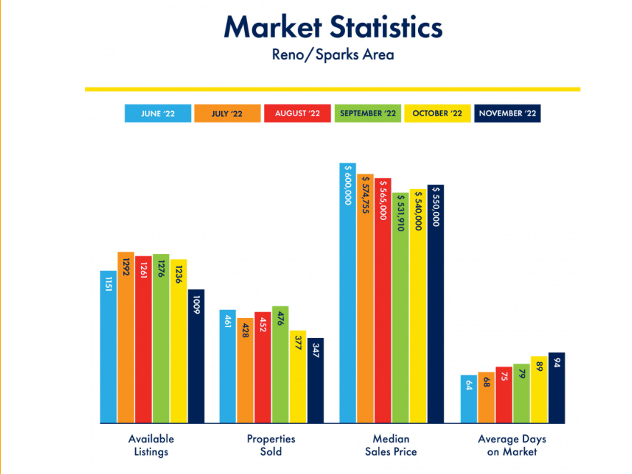
Recent Reno Real Estate Statistics

9) Postscript
We have pulled into the station at Truckee amid a howling blizzard.
My loyal staff has made the ten-mile trek from my estate at Incline Village to welcome me to California with a couple of hot breakfast burritos and a chilled bottle of Dom Perignon Champagne, which has been resting in a nearby snowbank. I am thankfully spared from taking my last meal with Amtrak.

After that, it was over legendary Donner Pass, and then all downhill from the Sierras, across the Central Valley, and into the Sacramento River Delta.
Well, that’s all for now. We’ve just passed what was left of the Pacific mothball fleet moored near the Benicia Bridge (2,000 ships down to six in 50 years). The pressure increase caused by a 7,200-foot descent from Donner Pass has crushed my plastic water bottle. Nice science experiment!
The Golden Gate Bridge and the soaring spire of Salesforce Tower are just around the next bend across San Francisco Bay.
A storm has blown through, leaving the air crystal clear and the bay as flat as glass. It is time for me to unplug my MacBook Pro and iPhone, pick up my various adapters, and pack up.
We arrive in Emeryville 45 minutes early. With any luck, I can squeeze in a ten-mile night hike up Grizzly Peak and still get home in time to watch the ball drop in New York’s Times Square on TV.
I reach the ridge just in time to catch a spectacular pastel sunset over the Pacific Ocean. The omens are there. It is going to be another good year.
I’ll shoot you a Trade Alert whenever I see a window open at a sweet spot on any of the dozens of trades described above, which should be soon.
Good luck and good trading in 2023!
John Thomas
The Mad Hedge Fund Trader


Global Market Comments
February 4, 2022
Fiat Lux
Featured Trades:
(FEBRUARY 2 BIWEEKLY STRATEGY WEBINAR Q&A),
(PYPL), (PLTR), (BRKB), (MS), (GOOGL), (ROM), (MSFT), (ABNB), (VXX), (X), (FCX), (BHP), (USO), (TSLA), (EDIT), (CRSP)
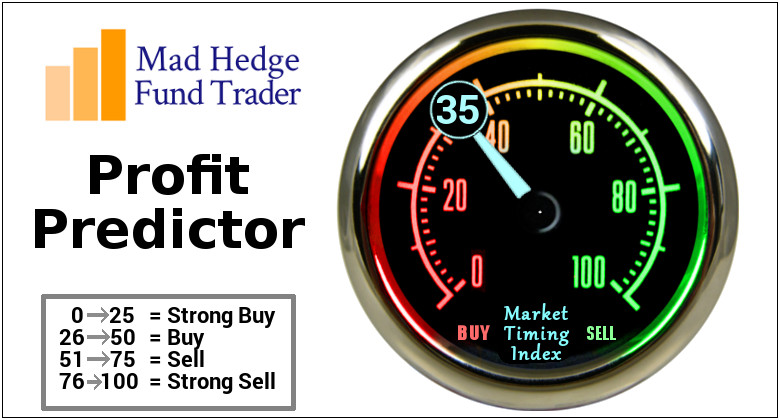
Below please find subscribers’ Q&A for the February 2 Mad Hedge Fund Trader Global Strategy Webinar broadcast from Incline Village, Nevada.
Q: Thoughts on Palantir Technologies Inc. (PLTR)?
A: Well, we got out of this last summer at $28 because the CEO said he didn’t care what the share price does, and when you say that, the market tends to trash your stock. But Palantir is also in a whole sector of small, non-money-making, expensive stocks that have just been absolutely slaughtered. And of course, PayPal (PYPL) takes the prize for that today, down 25% and 60% from the top. So, we’re giving up on that whole sector until proven otherwise. Until then, these things will just keep getting cheaper.
Q: Given the weakness in January, do you think we still have to wait until the second half of the year for a viable bottom?
A: Definitely, maybe. If things are going to happen, they are going to happen fast; we got the January selloff, but that’s nowhere near a major selloff of 20%. And the fact is, the economy is still great so that’s why this is a correction, not a bear market. At some point, you want to buy into this, but definitely not yet; I think we take another run at the lows again sometime this month. We just have to let all the shorts come out and take their profits so they can reestablish again.
Q: Why are bank stocks struggling?
A: A lot of the interest rate rises that we’re getting now were already discounted last year—banks had a great year last year—so they were front running that move, which is finally happening. To get more moves out of banks, you’re going to have to get more interest rate rises, which we will get eventually. We still like the banks long term, we still like financials of every description, but they are taking a break, especially on the “sell everything” index days. A lot of the recent selling was index selling—banks have a heavy weighting in the index, about 15%. So, they will go down, but they will also be the ones that come back the fastest. We’re seeing that in some of the financials already, like Berkshire Hathaway (BRKB) and Morgan Stanley (MS) which are both close to all-time highs now.
Q: What about the situation with Russia and Ukraine?
A: It’s all for show. This is a situation where both the US and Russia need a war, or threat of a war, because the leaders of both countries have flagging popularity. Wars solve those problems—that’s why we have so many of them by the United States. We’ve been at war essentially for most of the last 40 years, ever since Ronald Reagan came in.
Q: I didn’t exit my big tech positions before the crash, should I just hang onto them at this point?
A: The big ones—yes. The Apples (AAPL), the Googles (GOOGL), the Amazons (AMZN) —they’re only going to drop about 20% at the most, maybe 25%, and then they’ll go to new highs, probably before the end of the year. If you’re good enough to get out and get back in again on a 20% move, go for it. But most people can’t do that unless they’re glued to their screens all day long. So, if you have stock, keep the stock; if you have options, get out of the options, because there the time decay will wipe you out before a turnaround can happen. This is not an options environment, unless you’re playing on the short side in the front month, which is what we’re doing.
Q: When you send out the trade alerts, I have a hard time getting them executed. How do you advise?
A: Move the strike price, go out in maturity, and you can get our prices at slightly higher risk. Or, just leave it and, quite often, people’s limit orders get done at the end of the day when the algorithms have to dump their positions at the close because they’re not allowed to carry overnight positions. Also, even if you get half of my trade alerts, you’re doing pretty good—we’re running at a 23% rate in 6 weeks, or 200% annualized. And remember, when I send out a trade alert, you’re not the only one trying to get in there, so you can even go onto a similar security. If I recommend Alphabet (GOOGL), consider going over to Microsoft (MSFT), because they all tend to move together as a group.
Q: I am sitting on a 16% profit in the ProShares Ultra Technology (ROM), which you recommended. Should I take the money and run, and get back in at a lower price?
A: Yes, this is just a short covering rally in a longer-term correction, and you make the money on the volume. You win games by hitting lots of signals, not hanging on to a few home runs where people usually strike out.
Q: You said inflation will be short lived, so why would there be 9 interest rates after the initial 4?
A: It’s going to take us 8 interest rates just to get us back to the long-term average interest rate. Remember the last 2% is totally artificial and only happened because there was a financial crisis 13 years ago. So, to normalize rates you really need to get overnight rates back up to about 3.0%. And that means 12 interest rate hikes. If you don’t do that, you risk inflation going from controllable to uncontrollable, and that is the death of the Fed. So, that’s why I expect a lot more interest rate rises.
Q: Will the tension between Russia and the Ukraine affect the market?
A: No, it hasn’t so far and I don’t expect it to. Although, it’s hard to imagine going through all of this and not seeing a shot fired. When that one shot gets fired, then maybe you get a down-500-point day, which it then makes back the next day.
Q: Anything to do with Alphabet (GOOGL) announcing its 20 to one split?
A: No, it’s too late. We had a trade alert out on a Google 20 call spread which we actually took profits on this morning. So, nice win for the Mad Hedge Technology Letter there. There’s nothing to do with these splits, it’s not like they’re going to un-announce it, this isn’t a risk-arbitrage situation where there’s always an antitrust risk hovering over the deal that may crash it. This is pretty much a done deal and doesn’t even happen until July 1. People think bringing the share price from $3,000 down to $150 makes it available for a lot more potential retail buyers, which it does. It also makes call spreads on the options a lot cheaper too. When we put out these alerts, we can only do one or two contracts, even tying up $10,000—divide that by 20 and all of a sudden your cheapest Google call spread cost $500 instead of $10,000.
Q: Can you speak about the liquidity on your strikes? Sometimes we’re trading against strikes that have no open interest.
A: Whenever you put in an order for one strike, even if there’s nothing outstanding on that strike, algorithms will arbitrage against that strike—where your order is—against all the other strikes on the whole options chain. So, don’t worry if you have limited open interest or no open interest on our trade alerts. They will get done, and it may get done by some algorithm or some market maker taking more of another strike, that’s how these things get done. It’s all thanks to the magic of computers.
Q: Do you have thoughts about Freeport-McMoRan (FCX)? I have some profitable LEAP positions open.
A: It’ll go higher, keep them. And I like the whole commodity space, which means iron ore (BHP), copper, steel (X), etc.
Q: Would you trade Barclays iPath Series B S&P 500 VIX Short-Term Futures ETN (VXX) at this point?
A: No, because we’re dead in the middle of the recent range. That’s a horrible place to enter—you only enter (VXX) on extremes on the upsides and the downside.
Q: What should I do about Airbnb (ABNB) at this price? They’ve been profitable for 2-3 years, with revenues rising.
A: I think Airbnb is one of the best run companies in the world, and I expect their earnings to keep growing like crazy, especially once we get out of the pandemic. I am also a very frequent Airbnb user, having stayed in Airbnb’s in at least 10 countries, so I’m a big fan of them. The stock just got dragged down by the small tech bust but it will come back. This is a “throwing the baby out with the bathwater” situation.
Q: Are there any good LEAPS candidates now?
A: I’m not doing any LEAPS until we reach the final cataclysmic selloff of the correction. Otherwise, the time value will run against you enormously; I’d rather wait for better prices.
Q: Do you see a cataclysmic selloff?
A: Yes, I do. Maybe in a few more weeks, and maybe next week if we get a really hot 8%+ inflation rate—that would really kill the market.
Q: What will tell you if inflation is ending or slowing labor?
A: Labor is 70% of the inflation calculation. So, when these huge pay awards slow down, that's when inflation slows down. By the way, a lot of pay increases that are happening now are catch-up from the last 40 years of no pay increases for American workers in real inflation adjusted terms. So, a lot of this is catch-up—once that’s done, you can forget about inflation. Also, the long-term pressure of technology on prices is downwards, so allow that to reignite deflation, and that will be your bigger issue over the long term.
Q: What should I do about Editas Medicine Inc (EDIT) or CRSPR Therapeutics AG (CRSP)?
A: Don’t touch the sector, it’s out of favor. Let this thing die a slow death. When they come up with profitable products, that’s when the sector recovers. So far, everything they have works in labs but there are no mass-produced Crispr products, they’re trying for mass production on sickle cell anemia and a couple of other things, but still very early days in CRSPR technology.
Q: When will this recording be posted?
A: In two hours, it will be posted on the website. Go to “My Account” and you’ll find the last 13 years of recorded webinars.
Q: What do you mean by “stand aside from Foreign Exchange”?
A: The volatility in the foreign exchange market is just so low compared to equities and bonds, it’s not worth trading right now. When you can trade everything in the world—foreign exchange is at the bottom of the list. If I see a good entry point, I’ll do a trade; but do I trade Tesla (TSLA) with a volatility of 100%, or foreign exchange with a volatility of 5%? Those are the choices.
Q: Should I do any short plays in oil (USO)?
A: Generally, you don’t want to short any commodity unless you're a professional; I say that having been short beef futures when Mad Cow Disease hit in 2003 and you had three limit-up days in a row in the futures market. That happens in the commodity areas—liquidity is so poor compared to stocks and bonds that if you get caught in one of these one-way moves, you can’t get out. So that is the risk; and I’ve known people who have gone bust trading oil both long and short, so this is for professionals only. With stocks you get vastly more data and information than you do in the commodity markets where industry insiders have a much bigger advantage.
To watch a replay of this webinar with all the charts, bells, whistles, and classic rock music, just log in to www.madhedgefundtrader.com, go to MY ACCOUNT, click on GLOBAL TRADING DISPATCH, then WEBINARS, and all the webinars from the last ten years are there in all their glory.
Good Luck and Stay Healthy!
John Thomas
CEO & Publisher
The Diary of a Mad Hedge Fund Trader

The Aga Sophia Mosque in Istanbul
Global Market Comments
September 24, 2021
Fiat Lux
Featured Trade:
(TESTIMONIAL)
(SEPTEMBER 22 BIWEEKLY STRATEGY WEBINAR Q&A),
(TLT), (TBT), (V), (AXP), (MA), (FSLR), (SPWR), (USO), (UNG), (PFE), (JNJ), (MRNA), (MS), (JPM), (FCX), (X), (FDX), (GLD), (UPS), (SLV), (AAPL), (VIX), (VXX), (UAL), (DAL), (ALK), (BRK/B), (BABA), (BITCOIN), (ETHEREUM), (YELL)
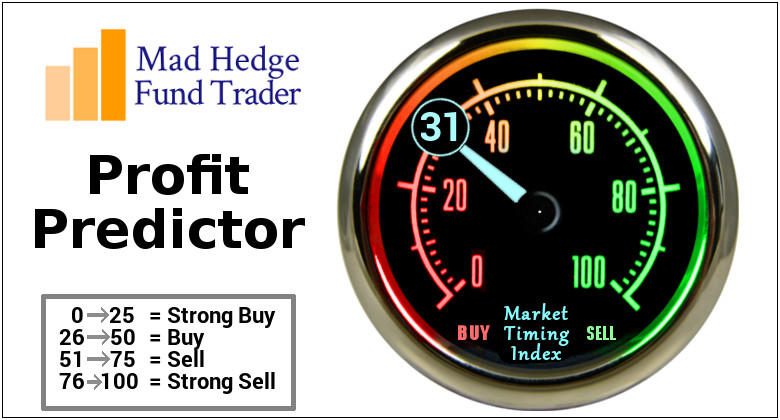
Legal Disclaimer
There is a very high degree of risk involved in trading. Past results are not indicative of future returns. MadHedgeFundTrader.com and all individuals affiliated with this site assume no responsibilities for your trading and investment results. The indicators, strategies, columns, articles and all other features are for educational purposes only and should not be construed as investment advice. Information for futures trading observations are obtained from sources believed to be reliable, but we do not warrant its completeness or accuracy, or warrant any results from the use of the information. Your use of the trading observations is entirely at your own risk and it is your sole responsibility to evaluate the accuracy, completeness and usefulness of the information. You must assess the risk of any trade with your broker and make your own independent decisions regarding any securities mentioned herein. Affiliates of MadHedgeFundTrader.com may have a position or effect transactions in the securities described herein (or options thereon) and/or otherwise employ trading strategies that may be consistent or inconsistent with the provided strategies.
This site uses cookies. By continuing to browse the site, you are agreeing to our use of cookies.
OKLearn moreWe may request cookies to be set on your device. We use cookies to let us know when you visit our websites, how you interact with us, to enrich your user experience, and to customize your relationship with our website.
Click on the different category headings to find out more. You can also change some of your preferences. Note that blocking some types of cookies may impact your experience on our websites and the services we are able to offer.
These cookies are strictly necessary to provide you with services available through our website and to use some of its features.
Because these cookies are strictly necessary to deliver the website, refuseing them will have impact how our site functions. You always can block or delete cookies by changing your browser settings and force blocking all cookies on this website. But this will always prompt you to accept/refuse cookies when revisiting our site.
We fully respect if you want to refuse cookies but to avoid asking you again and again kindly allow us to store a cookie for that. You are free to opt out any time or opt in for other cookies to get a better experience. If you refuse cookies we will remove all set cookies in our domain.
We provide you with a list of stored cookies on your computer in our domain so you can check what we stored. Due to security reasons we are not able to show or modify cookies from other domains. You can check these in your browser security settings.
These cookies collect information that is used either in aggregate form to help us understand how our website is being used or how effective our marketing campaigns are, or to help us customize our website and application for you in order to enhance your experience.
If you do not want that we track your visist to our site you can disable tracking in your browser here:
We also use different external services like Google Webfonts, Google Maps, and external Video providers. Since these providers may collect personal data like your IP address we allow you to block them here. Please be aware that this might heavily reduce the functionality and appearance of our site. Changes will take effect once you reload the page.
Google Webfont Settings:
Google Map Settings:
Vimeo and Youtube video embeds:
